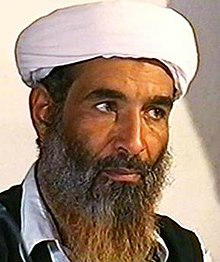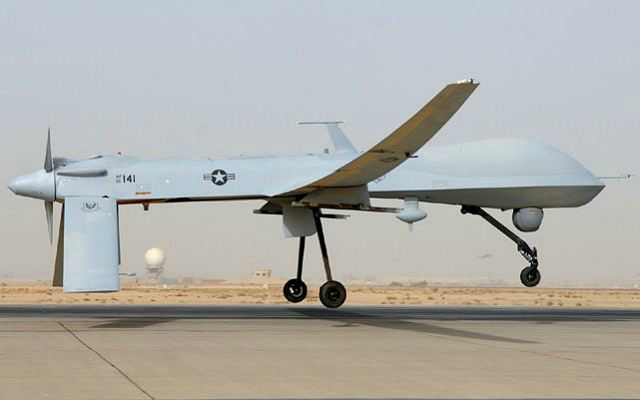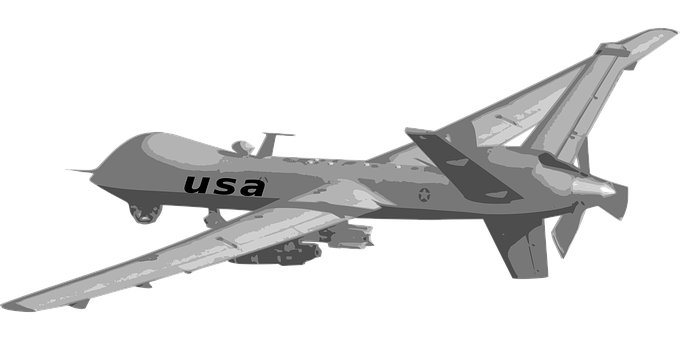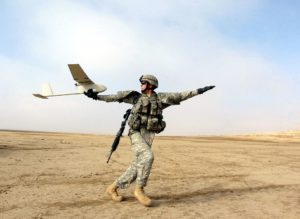When reviewing the history of drones, it is often asked when was the first ever executed drone strike? In reading several sources it was pretty interesting to find out the first publicly reported attack actually happened a year after the first actual attacks. Looking at the details of the first strikes, it’s evident that things weren’t successful in the beginning.
The first ever “reported” drone strike to the public was an attack made in Yemen on November 3, 2002. This attack targeted and believed to have killed Al Qaeda leader Qaed Senyan Abu Ali al-Harithi. The first actual known drone strike was found out later and happened in response to the September 11 terrorist attacks about a year before in Afghanistan. The first known successful attack by a drone was November 14, 2001 killing al-Qaeda leaders including Mohammed Atef, al-Qaida’s military chief and Osama Bin Laden’s son-in-law.
What was the mission of the first drone attack?
The first missions known to be taken on by attack drones were specifically for hunt and kill sorties of al-Qaeda leadership with highest priority on leaders Osama bin Laden and Mullah Omar. In the specific mission that killed Mohammed Atef, drones were being deployed out of Uzbekistan to track down key members of al-Qaeda. It is fascinating to know that they were piloted and commanded from trailers in the CIA headquarters parking lot located in Langley Virginia.
During the mission a drone was tracking a convoy of vehicles that were determined to be carrying al-Qaeda leaders near Kabul, Afghanistan. The vehicles stopped at a building at which point the drone fired a hellfire missile into the building taking out part of the building and killing occupants inside. Survivors of the initial strike ran into another building in which a 2nd hellfire was let loose and obliterated the building and everyone inside. It was this second attack that killed Mohammed Atef.
After continued successful strikes, it was quickly recognized that this type of warfare was the asymmetrical answer to what Al-Qaeda had brought to the United States in the form of the horrific 9/11 terrorist attacks. Afghanistan was the origin of modern drone attacks and the military platform would expand its operations in neighboring Pakistan were jihadi elements sought refuge from the US military campaign. Targeted attacks by drones became a common news report as US armed Predators driven by the CIA kept pursuit of terrorists.

The “Untold Story” of the first ever drone attack (It failed)
Weeks earlier before the first confirmed strike that killed Mohammed Atef, an unsuccessful attempt to take out Mullar Omar was actually the first know executed drone strike. It was soon after the 9/11 terrorist attacks and Osama Bin Laden and Mullar Omar were at the top of the targeting list of the United States. Mullar Omar and his senior lieutenants were located in a hideout in the southern Afghanistan city of Khandahar. The CIA and US military Central Command (Centcom) deliberated with the short targeting opportunity to hit Mullar Omar and his al-Qaeda team-members. Apparently there is controversy on how this played out, but it sounds like there wereF-16 fighter jets available close by that could have dropped devasting 1,000 pounds that would have easily taken out Mullar Omar’s entire group. Instead it was decided since the Predator drone was already on location and an order was given to proceed attacking with it’s Hellfire missiles. This was a big risk for a “high value” target since the drone to this point never attacked in an operation especially one this critical.
The drone released a Hellfire and the remote drone pilot target a car outside of where Mullar Omar was hiding and killed his body-guards. If you have ever seen thermal drone footage of an explosion, you will see that the pilot is typically can’t see the target area for a little while after the missile explosion since its masked by smoke, dust and fire emitted. The story states that Mullar Omar and the rest of the Taliban members with him escaped from the building during the initial aftermath of the first missile attack.
What type of drone was used in the first strike?
In the first known successful strike that killed Mohammed Atef and other al-Qaeda members, a Predator armed with Hellfire missiles was the platform use. The Predator Drone is manufactured by General Atomics was originally purposed to be a reconnaissance platform to operate in dangerous forward position missions. The drone entered service in 1995 carrying sophisticated optical camera and sensors to track targets. In the early days of deployment the drone carried synthetic aperature radar effective at looking through clouds and smoke. Today these drones typically carry a Multi-spectral targeting system and a variable aperature thermographic camera.
The Predator drone can be deployed easily around the world by breaking it down into 6 pieces and loaded into a transportable container called “the coffin.” Typically the the whole drone system including support equipment and ground station can be loaded into a C-130 Hercules transport aircraft.
One of the drone’s greatest strength is it’s ability stay in the air for long length’s of time keeping a persistent eye on the ground to monitor and track targets. The longest declassified flight recorded for a Predator drone is a little over 40 hours. It’s other strength is the camera sensor optics that can almost track a human target anywhere and persistently monitor until a missile is fired at the right time or special operations team is brought in to capture for interrogation.

How long was the development to build the first attack drone?
Drones prior to 2001 were used primarily for surveillance and monitoring missions including famously during the Bosnian War in 1995 were a RQ-1 Predator was shot down by the Serbs and another was purposely crashed into the mountain. From 1995 to 2000 the Predator RQ-1 maintained as a reconnaissance vehicle for the CIA and USAF. It was until June 2000 that direction was given to the United States Air Force to explore options to arm the drone. The retrofitting and updated design included a laser targeting system and attachment of wing pylons to hold Hellfire anti-tank missiles. The original vision of the armed Predator was to spread across Europe and help blunt any armored offensive by Russian tanks.
After seeing successful testing against tanks in 2001, the deployment was sped up after the 9/11 attacks. The drone designation changed from RQ-1 to MQ-1A to reflect it’s purpose from reconnaissance to attacking targets.
The Predator development can be traced back to the original designer Abraham E. Karem. Abraham was born in Iraq but grew up in Israel. In Israel he became an engineer and started developing aerospace systems. As he worked through his aerospace career, Abraham moved to the United States to explore entrepreneurial opportunities. He settled in Los Angeles in 1977 and by 1981 he had developed a demonstrator uav for DARPA that was able to fly for an estimated 56 hours. The amazing endurance performance of the uav led to a 1985 contract to further develop the unmanned aerial platform that ended being called the GNAT. Abraham’s company was bought in 1990 by General Atomics that further developed it into what is known today as the Predator. General Atomics received a $31 million contract in 1994 to deliver 3 Predators and a ground control station. The rest of the story continues with the story of the first ever drone strike conducted in Afghanistan.
When was the first drone invented?
Versions of drones our unmanned aerial vehicles (uavs) have existed in one form or another since World War II or even before. Advances in modern drones accelerated during the Vietnam War where money started pouring into this technological capability. In 1966, a unit was formed called the Strategic Reconnaissance Squadron of the 100th Strategic Reconnaissance Wing. This unit operated drones called Ryan Firebees that were launched from the wings of Hercules transport aircraft. These aircraft could carry up to 4 Ryan Firebees at time to deploy near recon targets over Vietnam. These uavs would operate for a couple hours and then deploy a parachute to land to the ground. Once on the ground, helicopters tasked to retrieve the drones would locate and haul away the drones to acquire the recon intel that it had gathered. It was until the 1980s where development increased and the beginnings of the modern uav started with the work conduced by Abraham E. Karem.
Finding out more information on the Predator Drone and History
This site will continue to post more information on drone technology to help build the picture of this modern military asset now being used by more and more countries. Other interesting places related to this story can be found at these websites:


